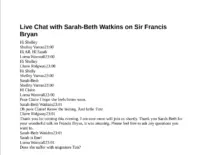On this day in Tudor history, 2nd July 1536, Thomas Cromwell, the king’s right-hand man, was formally appointed Lord Privy Seal. The previous holder of the office had been Thomas Boleyn, Earl of Wiltshire and Ormond, who'd been stripped of the office following the falls of his children, Queen Anne Boleyn and George Boleyn, Lord Rochford.
But what is a privy seal and what does the Lord of the Privy Seal do?
Find out more in today's talk.
Also on this day in Tudor history, 2nd July 1489, Tudor clergyman, statesman, theologian, scholar and highly intelligent man, Thomas Cranmer, Archbishop of Canterbury, was born. You can find out more about him in the video “13 things you probably didn't know about Thomas Cranmer”:
Also on this day in history:
- 1497 – Death of Sir William Haute, composer and cousin of Elizabeth Woodville. Haute was Sheriff of Kent at various times, as well as a Justice of the Peace and Commissioner. According to his biographer, Peter Fleming, he was also a patron of musicians, and a composer, composing carols and “polyphonic settings of the Benedicamus domino”.
- 1540 – Henry Fitzalan, the future 12th Earl of Arundel, appointed Deputy of Calais, replacing Arthur Plantagenet, Viscount Lisle.
- 1557 – Baptism of Philip Howard, 13th Earl of Arundel, son of Thomas Howard, 4th Duke of Norfolk, and his wife Mary (née Fitzalan). He was baptised in the Chapel Royal at Whitehall Palace with Philip of Spain and Nicholas Heath, Archbishop of York, standing as godfathers and Elizabeth Howard, dowager Duchess of Norfolk, standing as godmother.
- 1594 – Burial of Robert Scarlett (Old Scarlett), sexton at Peterborough Cathedral. A verse accompanying his portrait in the cathedral states that he buried Catherine of Aragon and Mary, Queen of Scots at the cathedral, but it is not known whether this is true.
- 1610 – Burial of Richard Knolles, historian and translator, at St Mary's Church, Sandwich. His works include “The Generall Historie of the Turkes” (1603), The “Six Bookes of a Commonweale” (1606), which was a translation of Jean Bodin's “La république”, and a translation of Camden's “Britannia”, which was not published.
Transcript:
On this day in Tudor history, 2nd July 1536, Thomas Cromwell, the king’s right hand man, was formally appointed Lord Privy Seal.
The previous holder of the office had been Thomas Boleyn, Earl of Wiltshire. Wiltshire had held the office since January 1530, but he was stripped of the office on 29th June 1536, just over a month after the executions of his children, Queen Anne Boleyn and George Boleyn, Lord Rochford.
The record of Cromwell’s appointment in Letters & Papers, dated 1st July 28th year of Henry VIII’s reign, reads:
“Th. Crumwell. Appointment as keeper of the Privy Seal, with fees of 20s. a day, or 365 pounds. a year; 90 pounds thereof out of the customs of Pole, 200 pounds small custom of London, 56 pounds 13s. 4d customs of Bristol, and the remaining 18 pounds 6s. 8d customs of Plymmouthe and Fowey, the office having been granted during pleasure to Thomas earl of Wiltshire and Ormond by patent. 23 Jan. 21 Hen. VIII. Westm.”
But what is the privy seal and what does it mean to be Lord Privy Seal?
Well, the privy seal is not to be confused with the Great Seal of State, which was held by the Lord Chancellor. The privy, or private, seal was the personal seal of the monarch, in this case Henry VIII, which was used for authenticating documents. The Lord Privy Seal was the keeper of this seal and was one of the top officers of state, coming below the chancellor and treasurer.
The Encyclopaedia Britannica explains that the first privy seal was used by King John who ruled from 1199 to 1216 but back then it was kept by the clerks of the king’s chamber. Then, in the reign of King Henry III, it was transferred to the Wardrobe and in the reigns of Kings Edward I and Edward II it was kept by the comptroller of the Wardrobe. In 1311, the seal was transferred to its own keeper and the term Lord Privy Seal was first used in the 15th century when Richard Foxe, Bishop of Winchester, was its custodian. The monarch would produce writs of privy seal which would have his personal seal on them and would authorise his chancellor to issue letters under the great seal. The Encyclopaedia also explains that the “privy seal was used for royal letters sent to foreign monarchs and to officers and subjects in England as well as those overseas.”
As well as Thomas Boleyn and Thomas Cromwell, Tudor Lord Privy Seals included Cuthbert Tunstall, Bishop of London; Sir Nicholas Bacon; William Cecil, Lord Burghley; William Howard, 1st Baron Howard of Effingham; Sir Francis Walsingham, and Robert Cecil, Earl of Salisbury.
The office of Lord Privy Seal is still going today. The UK government’s website states that “The Lord Privy Seal is responsible for the organisation of government business in the House, providing assistance to all Lords and offering advice on procedure. The Lord Privy Seal also expresses the collective feelings of the House on formal occasions, such as motions of thanks or congratulations.” The present holder is The Rt Hon Baroness Evans of Bowes Park.




Leave a Reply